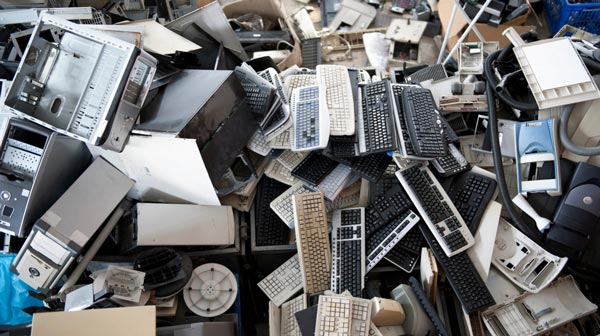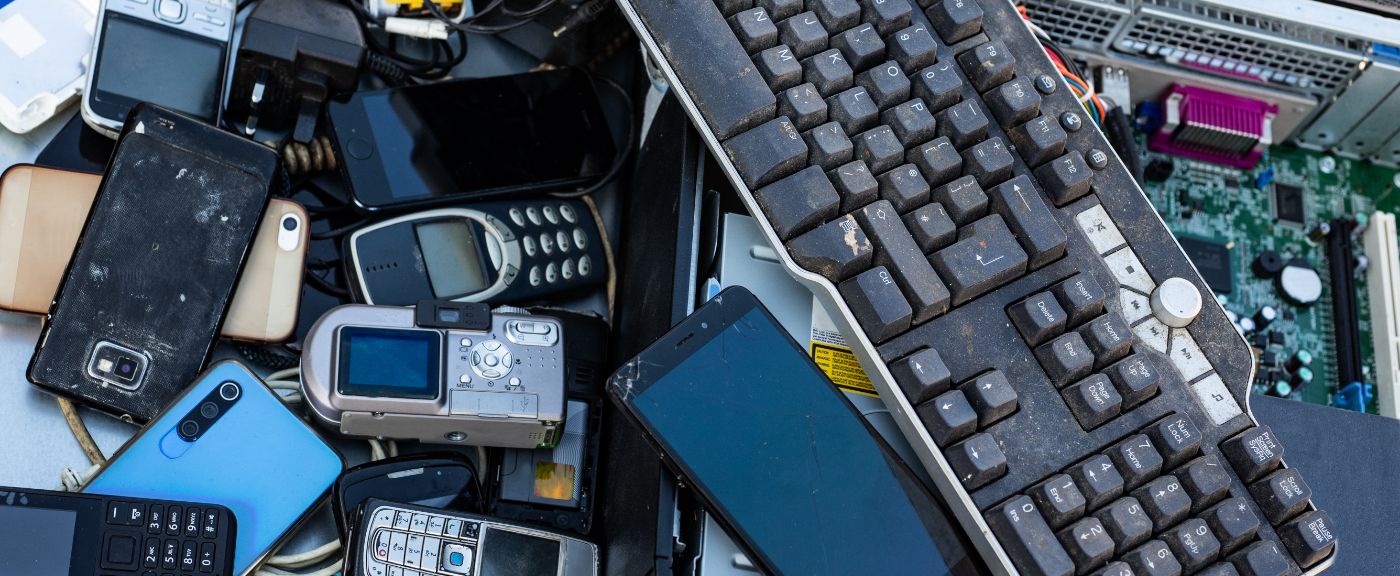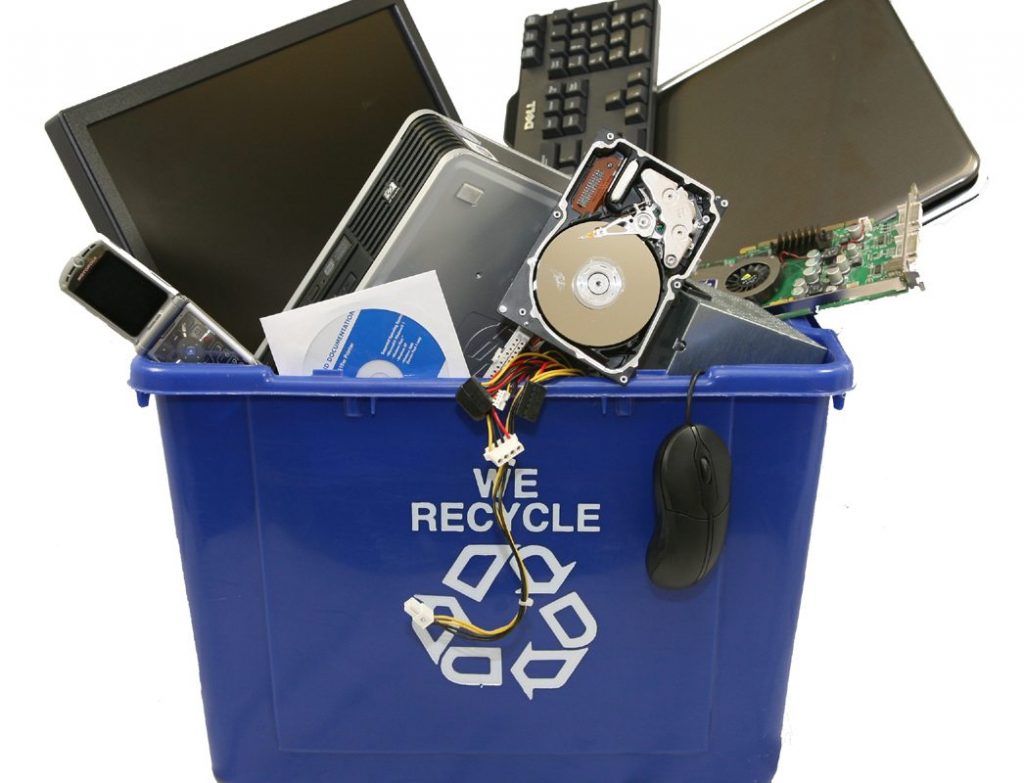R2 Certification: The Mark of Quality in Electronic Devices Recycling
R2 Certification: The Mark of Quality in Electronic Devices Recycling
Blog Article
Elevate Your E-Waste Administration With R2 Certification: a Thorough Introduction
In the world of accountable electronic waste monitoring, the relevance of executing effective approaches can not be overemphasized. As innovation quickly develops, the need for correct disposal and recycling of digital gadgets has ended up being increasingly critical. One secret technique to boost e-waste administration methods is by attaining R2 qualification. This certification stands as a hallmark of quality in the area, indicating adherence to strict criteria that make sure environmentally sound techniques. By checking out the procedures and benefits related to R2 certification, a much deeper understanding of just how it can transform e-waste monitoring methods arises, clarifying a path in the direction of sustainability and ethical disposal methods.
Importance of E-Waste Administration

When e-waste is not handled appropriately, these harmful materials can seep right into the community, creating harm to wildlife and possibly going into the food web, posing dangers to human wellness. The improper disposal of e-waste adds to pollution and greenhouse gas discharges, aggravating climate modification and ecological destruction.

Benefits of R2 Qualification

To start with, R2 certification boosts trustworthiness by showcasing an organization's commitment to lasting practices. It ensures customers, companions, and stakeholders that the company abides by stringent requirements for e-waste management - r2 certification. This integrity can lead to raised count on and enhanced connections with customers who prioritize ecological duty
Second of all, R2 qualification helps alleviate dangers connected with inappropriate e-waste disposal. By complying with the rigorous guidelines set forth by the accreditation, companies can decrease the possibility of data violations, ecological contamination, and lawful effects. This proactive method safeguards the business's track record and decreases possible liabilities.
Lastly, R2 certification demonstrates a commitment to environmental stewardship - r2 certification. By responsibly handling electronic waste with accredited procedures, companies add to the preservation of resources, reduction of contamination, and promotion of a circular economic situation. This dedication not only benefits the environment but also aligns with evolving consumer expectations for lasting business practices
R2 Certification Process Overview
Having actually developed the advantages of R2 qualification in promoting trustworthiness, danger reduction, and ecological stewardship, it is important to now outline the comprehensive process entailed in acquiring this qualification. The R2 certification process begins with an extensive evaluation of the organization's operational plans and treatments to make certain conformity with the R2 standard. This initial assessment is important in recognizing any type of spaces that need to be dealt with before continuing additionally.
When the organization's techniques line up with the R2 conventional requirements, an independent third-party auditor performs an on-site audit to examine the implementation and performance of these methods. This audit includes a thorough review of documents, interviews with staff, and physical assessments of facilities to validate compliance.
Complying with a successful audit, the company receives a certification choice based on the auditor's findings. If accepted, the organization is provided R2 certification, showing its commitment to accountable e-waste monitoring. It is necessary to keep in mind that maintaining R2 accreditation calls for ongoing compliance with the criterion's requirements and regular audits to make certain continued adherence to finest techniques in e-waste recycling and here disposal.
Key Requirements for R2 Conformity
A necessary aspect of accomplishing R2 conformity is ensuring that all electronic waste (e-waste) handling centers meet strict ecological and safety requirements. To abide by R2 demands, organizations should follow essential criteria that concentrate on liable e-waste management methods. These requirements consist of implementing a recorded ecological, wellness, and safety and security monitoring system, ensuring the protected handling of data-containing gadgets, and carrying out thorough downstream due diligence to track the final location of e-waste products.
Moreover, R2 conformity demands the correct screening, repair, and recycling of digital tools to prolong its beneficial life and lessen ecological effect. Facilities looking for R2 qualification need to likewise prioritize worker health and safety by providing necessary training, individual safety devices, and a risk-free workplace. In addition, keeping in-depth records of e-waste processing tasks and routinely undergoing audits by accredited licensing bodies are crucial elements of demonstrating recurring conformity with R2 requirements.
Impacts of Lasting E-Waste Practices
The application of sustainable e-waste techniques in accordance with R2 compliance not just makes sure environmental and safety and security requirements are met yet likewise significantly influences the general lifecycle of digital items. By adhering to R2 requirements, electronic waste monitoring great site processes come to be much more efficient, lowering the environmental impact of electronic items. Sustainable e-waste techniques help with the correct disposal of electronic parts, making sure that hazardous products are handled properly and do not wind up polluting the setting.
Furthermore, welcoming sustainable e-waste techniques promotes the circular economic situation by assisting in the recovery and reuse of useful products from electronic items. This not just conserves valuable sources but likewise lowers the requirement for basic material extraction, minimizing the environmental influence of digital production. Furthermore, lasting e-waste techniques can add to task production in the recycling and repair industries, promoting financial development while promoting environmental obligation. Generally, the fostering of lasting e-waste techniques under R2 certification serves as a crucial step towards accomplishing a much more eco lasting electronic devices industry.
Conclusion
Finally, implementing proper e-waste monitoring techniques is critical for ecological sustainability and source conservation. R2 accreditation plays an essential role in ensuring responsible handling and disposal of digital waste. By sticking to the strict requirements set forth by R2 criteria, companies can not only reduce their environmental influence yet likewise contribute to an extra lasting future for generations to find.
One key method to boost e-waste administration practices is by attaining R2 qualification. By discovering why not try this out the procedures and benefits linked with R2 qualification, a deeper understanding of how it can change e-waste administration techniques emerges, losing light on a course towards sustainability and moral disposal methods.
The R2 certification procedure begins with an extensive review of the company's operational policies and treatments to ensure conformity with the R2 requirement. If accepted, the organization is provided R2 accreditation, showing its commitment to accountable e-waste administration. On the whole, the adoption of lasting e-waste methods under R2 qualification serves as a crucial action towards accomplishing a more ecologically lasting electronics market.
Report this page